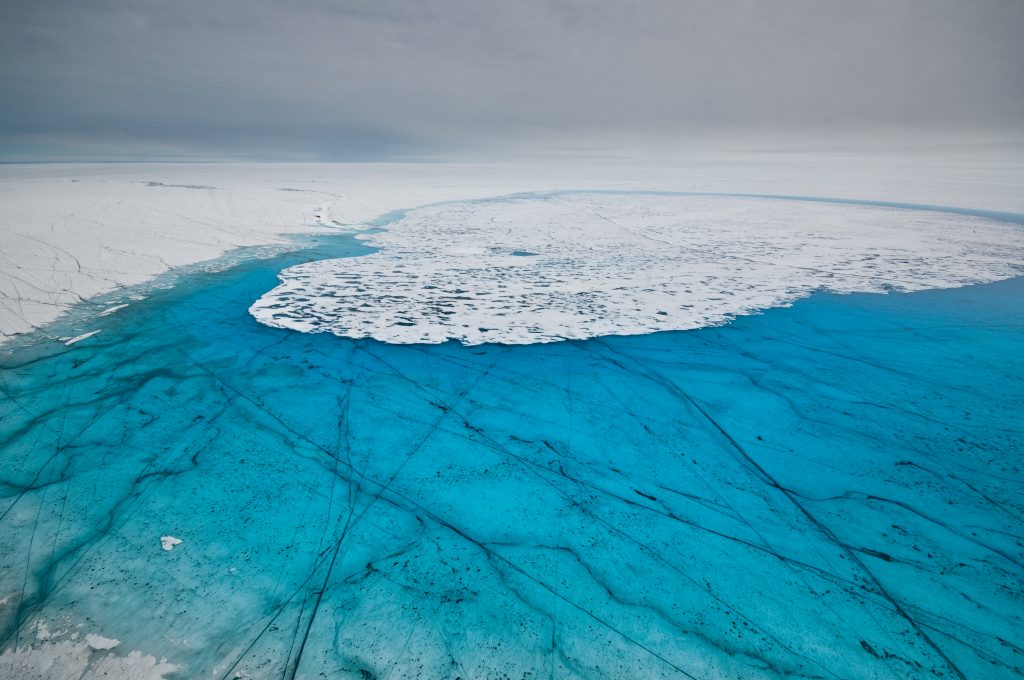Until recently, there were just a few known lakes lying underneath Greenland. But now, scientists have found 50 more new lakes beneath the Antarctic continent. Subglacial lakers are some of the least explored, but also most important natural features on Earth. And so far, we have vastly underestimated their impact and prevalence.
Until the 1950s, scientists thought that there was no liquid water underneath Greenland. But research has come a long way since then. The latest research has increased the number of known lakes lurking beneath the ice sheet to a total of 60. The study has allowed scientists for the first time to build up a picture of where lakes form under the Greenland ice sheet. That will help them determine the influence of lakes on the wider subglacial hydrological system and ice-flow dynamics. With that in mind, let’s talk about some of the known lakes of Greenland.
Aajutsup Tasia
This large lake is located in central-western Greenland, located approximately 12km (7.5 miles) northeast of Kangerlussuaq. It has an elongated oval shape, and it is an oligotrophic lake. The depth is 100 feet, and the lake covers an area of 1,350ha. The surface of the lake is almost level with the surface of the neighboring meltwater lake.
![]()
Centrum Lake
Located near Greenland’s northeastern coast, it was one of the first discovered lakes underneath Greenland. This lake was first observed in 1938 during an aerial survey, but it was named in 1952. At that time, it was chosen as a center for geological research in which Catalina planes could land. Huts were build and scientists used the location as a base for research in the area. In 1955, the lake was considered as a possible site for a military base.
Kaffeklubben So
There is not much to say about this lake. It is significant because it is the world’s most northerly lake. Located on the Kaffeklubben island, it was formed 3,500 years ago when a glacial retreat allowed rain to collect as a lake.
Romer Lake
Famous for its impressive elephant foot glacier, this land-locked freshwater fjord is located at the northern end of King Frederick VIII Land, near the northeastern coast of Greenland. The Danish military base and weather station Nord lies 31 miles to the northeast of the lake. This lake, as well as its surroundings, are part of the Northeast Greenland National Park zone. It was first mapped in 1933 during aerial surveys, and it was named after the American paleontologist Alfred Romer.
Sanningasoq
This large oligotrophic lake is twin to the Aajutsup Tasia lake. The two lakes are connected via a narrow water passage through a broken isthmus. In the west of the lake, there is a wide Tarajornitsut tundra highland. The twin lakes are both being in the ancient outflow path of Russell Glacier, and the Greenland Ice Sheet.
Sea Lake
This lake with a fjord structure is located in the Germania Land peninsula to the north. Short river discharges its water in the northern shores of the Dove Bay of the Greenland Sea.
Known as Seal Lake as well, this land-locked freshwater ford is also close to the Danish weather station. It is part of the Greenland National Park zone.
Tasersuaq
The Arctic Circle Race takes place close to the lake, and the trail partially overlaps with the Polar Route. Tasersuaq is a large lake, located in the central-western Greenland. The name basically means large lake in Greenlandic language.
It is a latitudinal lake with an elongated sausage shape.
Tasersuatsiaq
Another lake in central-western Greenland, at one point, this lake was called Lake Ferguson. The lake is connected to the Roklubben Restaurant by a gravel road, which is one of the very few in Greenland. The lake is a source of fresh water for Kangerlussuaq.



